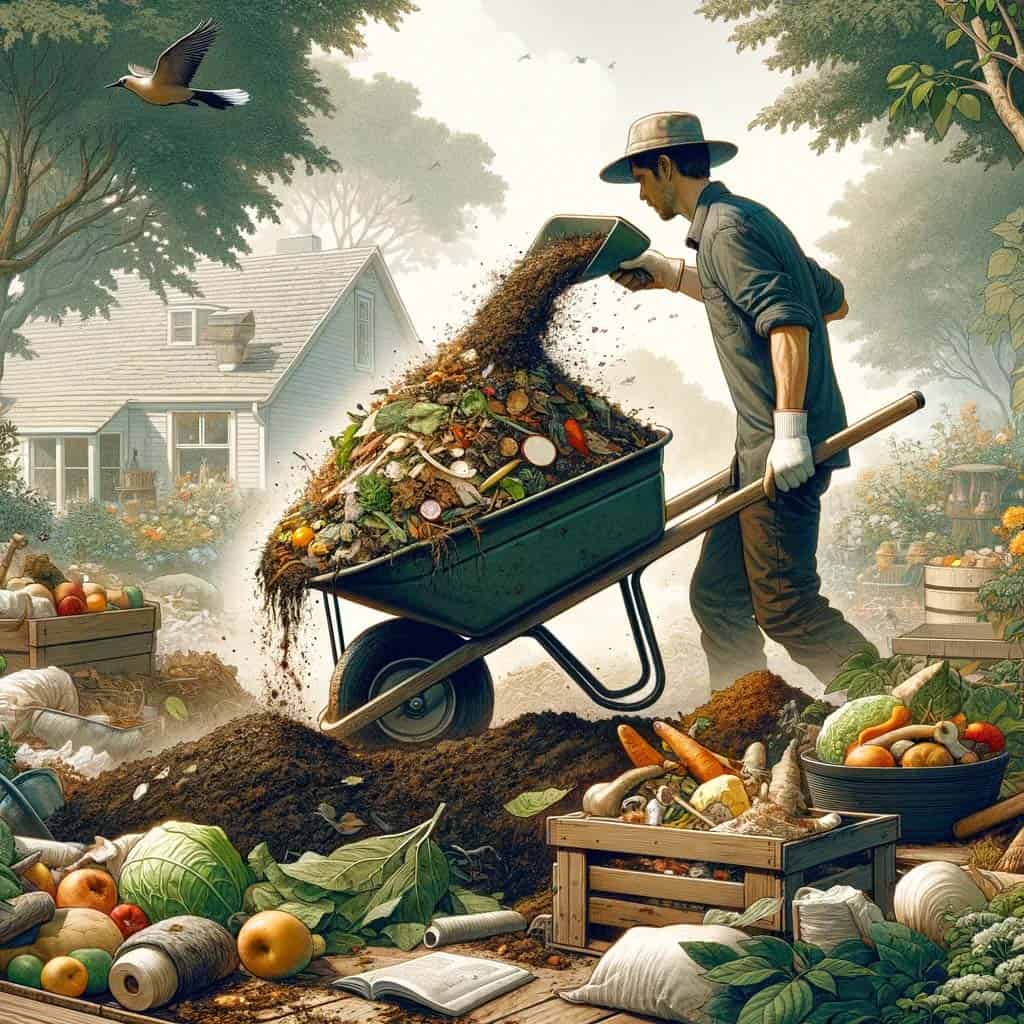
How to move a compost when doing a short distance move.
In the past, we wrote an article for all you green thumbs out there who would want to move your garden plants with you to your new home:
Movers in North Vancouver give ideas for preparing and moving garden plants
We’ve also given tips for moving plants.
If you have a compost you’ve been working on for a long time, it can be a shame to leave it behind when you move a short distance. While long distance moves can be preventative for bringing your compost with you (due to cross-country regulations on plants), it can be possible with a short distance move.
Here are some options and tips we found on how to move a compost when doing a short distance move:
Find a way to contain the compost before you move to your new home
This is a step that needs to be taken care of well in advance of moving day. The compost is going to be messy, maybe even slimey and smelly, and so it will take a bit of work to keep it contained before it goes into a moving truck or any vehicle. Unless you or a friend has a flatbed truck that can make the trip just for the compost, you’ll want to find a container for it. Or, some on this forum have used plastic bags, and suggested poultry or sandbags as alternatives. But they did mention that the higher volume bags may be too heavy to lift, so do consider that before you try to consolidate too much into one bundle.
Hence, moving a compost works well for short distance moves, rather than long distance ones.
Many compost bin products out there will have an opening at the bottom to let out the nutrient-rich stuff. There may be trap doors on them too. Generally though, these plastic bins might not be able to be completely shut for the move, to prevent spillage.
While paper bags may seem ideal, as they can biodegrade at the new home, remember that composts can be wet. So in addition to just containing the material, you’ll want to make sure to avoid leakage during the move. Or otherwise have your car or truck smell like garbage juice for a while!
Remember to care for the compost, and its critters before you move
Before your short distance move, you’ll want to take care to do the following, to keep your compost, and your new home healthy:
Take this opportunity to make sure you have turned the compost to give it air, and to circulate its moisture. This is a method of composting that helps keep thecompost healthy and working well.
Composts contain living creatures, and they need water to work well. Ensure you are watering your compost during the move, so it doesn’t dry out. Yes – this will make it heavy during the move! So moving a compost with a weight-based moving company may not be the most ideal price-wise. Try lining the compost with cardboard (or just putting paper material in it), to help contain some of the water and absorb the smell. You don’t want it too wet, remember that.
Do ask a moving company if they can help you move your compost to your new home, though. They may have special materials to do this with. Or, they may just give you the helpful advice, in advance, that they can’t take the dirty heap with them in their nice, clean trucks!
When you do the turning of the compost, ensure you are not bringing unwanted pests or neighbourhood ‘buddies’ with you. Remember – garbage attracts rodents. They could be buried in there, or using it as a tasty home. So shovel out your compost first! Don’t just lift the whole thing onto a plank and try to move it whole!
See our related articles on this topic:
While you want to get rid of rodents and unwanted pests, you do want to make sure you are bringing your worms with you! Worms are something that composters seekto find. So you won’t want to leave them behind.
Find a good spot to place the compost after you move
Strategically plan your compost position! It can help give the plants in the area some good fertilizer. You also want it in a spot where you can reach it easily, but where it won’t attract rodents, or create bad smells, too close to your home.
Compost after your move with your moving materials
Treehugger.com wrote an interesting article on how to ‘go green’ with your move, by composting the materials you used during the move. In the case of the aforementioned article, the movers did a sheet-mulching project with their cardboard boxes, to help create a new landscape. The cardboard boxes will eventually decompose into the ground, and can be topped with woodchips or other natural material to create a clean garden look.
Make things easier on your next short distance move: consider an indoor, electric compost
This is by no means a promotion, but we thought we’d mention that there are such things as indoor composting bins, which run on electricity. This article explains more about them. It can be hard to start a compost if you move often, even if you want to get into it. This may be a solution to make moving a compost easier next time.
Too much trouble to move a compost? Ask if the new home dwellers want it
If all of this is sounding like a bit too much trouble for something you can start again – for free at that – then we have another idea: try leaving the compost behind. Some on a forum have suggested this. Composts are useful to gardeners. So it may just be that the people who will occupy the home you’re moving out of may want it. You could take some of your worms with you in a plastic food container, to help out your new heap after you move.
You may not want to leave it behind without permission though. Because remember – composts attract rodents! Do be respectful to the new occupants of the home.
Call Ferguson Moving & Storage in Vancouver BC
If you’re making a short distance move in Vancouver and looking for a good moving & storage company that you can trust — give Ferguson Moving and Storage a call at 604-922-2212 or request a quote online.

Categories
Moving Resources
Moving Checklist
Follow this comprehensive moving checklist to ease your relocation stress and stay organized.
Learn MoreMoving Company Comparison Guide
This comparison guide helps you evaluate and select the perfect moving company for your needs.
Learn MoreWe make moves easy for you.
- Local Moving
- Long Distance Moving
- Seniors Moving
- Piano Moving
- Item Relocation
- Overnight and Long-term Storage
- Packing Supplies

